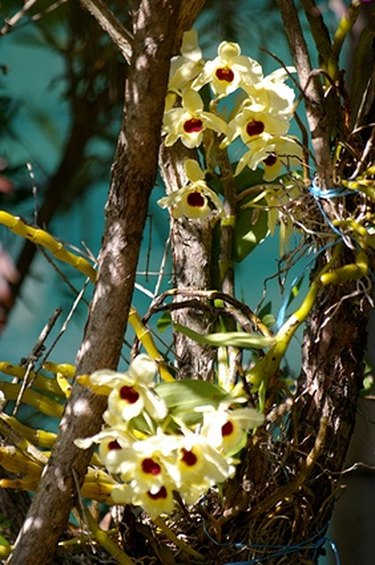Things You'll Need
Epiphyte orchids
Orchid planting soil
Green florist wire
Watering can
Slow-release fertilizer

Faced with over 30,000 varieties to choose from, you can grow orchids in a huge array of locations and containers. Epiphyte orchids, such as Cattleyas, Dendrobiums and Vandas, live and thrive on the branches of trees, and therefore are especially suited for planting in hanging baskets, given adequate air circulation.
Step 1
Select an orchid that is not a terrestrial orchid for planting in hanging baskets. When you are at the flower store or nursery, you can generally tell that an orchid is an epiphyte orchid if it is contained in moss or bark. If the orchid is contained in soil, it is most likely a terrestrial orchid and won't do well in a hanging basket.
Video of the Day
Step 2
Pot the orchid in the hanging basket using an orchid planting soil. Do not shake or over-handle the orchid roots, as this could stunt its growth.
Step 3
Fasten the orchid to the hanging basket with a green florist wire until its roots have established. Not all orchid varieties need to be fastened to the hanging basket, but if your orchid moves or falls in the hanging basket, secure it while its roots are establishing in the basket.
Step 4
Water the orchid every one to two weeks, depending on its variety. Never over-water your orchid, as this is the easiest way to kill it. Test the soil by touching it with your fingers. If it is dry to the touch, water the soil until it becomes moist but not waterlogged.
Step 5
Place the hanging basket in a shaded area that receives no direct sunlight. Hang the basket in a location that gets good air circulation, which epiphyte roots require for healthy growth.
Step 6
Fertilize the orchids with a slow-release fertilizer once a week during its growth period.
Video of the Day